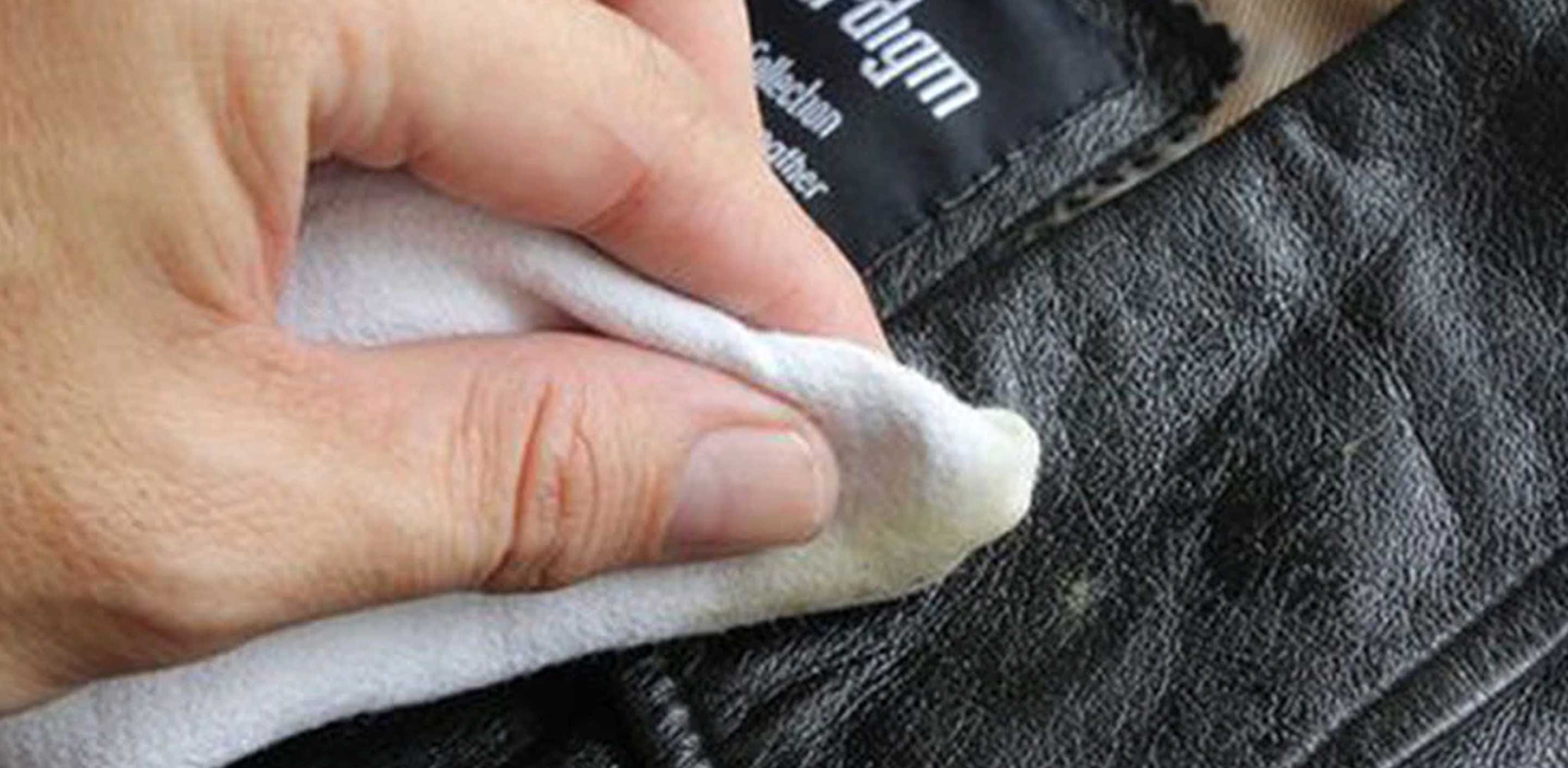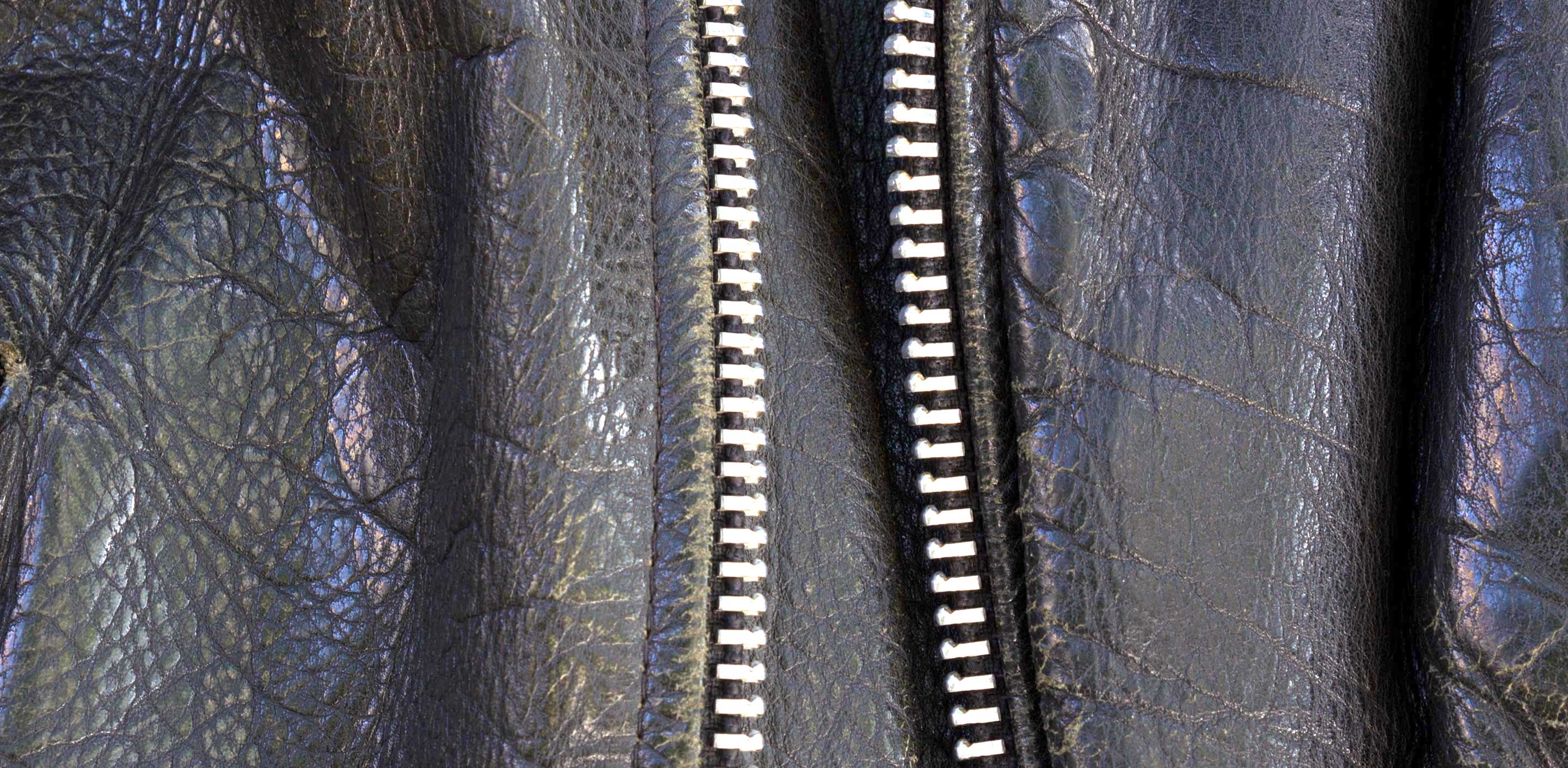Why Is My Leather Jacket Turning White?

Leather is an expensive material that requires proper care and attention in order to stay as good as new for a long time. If neglected, leather can start to show signs of aging and start to tear off. Turning white is another issue that can be a result of carelessness. Everyone has at least one leather clothing item in their closet and learning the steps for proper care can go a long way. When leather turns white, a couple of factors contribute to the phenomenon. Knowing and understanding these factors is crucial to picking the right cleaning solution.
So the question is why does leather turn white? And the answer could vary based on the number of elements such as the type of leather, which cleaning products do you use, or how often do you clean your leather? Mainly, leather turns white because of bacteria or fungus growth. The elements that turn leather white often include salt bloom, salt stain, and metal corrosion.
Continue reading to learn more about what causes leather to turn white!

Causes
Leather that has turned white is most commonly caused by fungi and bacteria.
Leather items are likely to become discolored if they are kept improperly for a long time. That is the reason why you read and hear so much about later care. The fuss around this topic is justified if you have spent a lot of money on your precious leather jacket or a bag. You wouldn't want to see it getting bad just because you didn't store it properly or didn't use the right cleaning products.
Leather shoes, bags, jackets, etc should be stored away from damp areas so that fungus and bacteria do not grow on the leather. Constant moisture can penetrate your leather item and turn it into a moldy piece of clothing that is no good for you anymore. Moreover, when you put leather items away when they're slightly damp after you have been exposed to snow or rain drops, microorganisms can grow on them, which causes the leather to turn white over time.

The weather can also encourage the growth of bacteria and fungus. Leather should always be stored at a moderate temperature where the humidity and air pressure are not too high or low. Your leather items can become moldy or mildew if the humidity levels in your area are too high.
Furthermore, if you go with leather preservatives and cleaners that contain ingredients such as Neat's-foot oil or mink oil, they can cause bacteria and fungi. It will do more harm than any good. It particularly turns the leather white. So every time you go and buy products for your leather, take your time to do thorough research to avoid any devastating mistakes.
Another important thing to remember is that the effects of mold or mildew growth caused by humidity may not always be white. It may also have a dusty, speckled appearance in some cases and can also appear green.
One of the easiest ways to tell whether the leather is mouldy is the gross smell that comes from it. By smelling your leather, you will be able to detect any bacterial or fungal growth that has caused it to turn white. Musty, earthy, meaty, or rotten wood smell, and a wet sock smell will make it impossible for you to bear the damaged leather anymore.

Solutions
Don't lose hope in case your leather has started showing signs of fungus or bacteria. Let's go through a few steps that can help come up with a fix and revive your precious leather jacket, bag, or other accessories.
You will be able to use the materials such as cleaner, conditioner, oil, and polish that you may already have in your closet to restore your leather car seats, couch, shoes, jackets, etc.
Mold and mildew removal techniques vary depending on the type of leather and the causes that may have led you to this situation. Mostly, people own leather that is finished, unfinished, or suede. And as far as the leather care products are concerned, every leather owner has a leather cleaner, conditioner, and a polish sitting somewhere in their closet.
In some cases, finished leather is easier to fix because it has an extra layer to help protect and preserve the leather's physical appearance and durability. However, that completely depends on the intensity of the damage we're dealing with.
Method 1
First of all, to avoid causing any more infections. Make sure all the mold or mildew residue is gone from the leather by using a soft brush. To further clean the leather, use a vacuum cleaner to remove any loose debris found on its surface. If that doesn't work, shake the leather or pat it gently outside your room or over a trash can.
Add two or three drops of your dish soap or leather cleaner to your microfiber cloth till it's damp. Scrub gently in a circular motion over the leather surface. Once you've covered all of the leather with the cleaner, now it's time to rinse it off. Using a clean cloth dampened with plain water, you can now wipe off the suds from the leather surface once it has been thoroughly cleaned.
The next step is to prepare a solution containing equal parts water, rubbing alcohol, and detergent. Dampen the cloth with the solution and rinse. Dry and wipe it down again. At this point, the leather should be completely dry. Once the leather conditioner has been applied, buff it until there are no residues left. Let it rest for 24 hours and dry naturally.
Method 2
Dust off the white portion using a soft hairbrush and remove the residue with a lint-free towel. Once the surface has been thoroughly cleaned and dusted off, you're good to apply the spew remover using a microfiber cloth. There are often instructions written down on the spew remover bottle. You must follow them for the best results.
Clean the leather using method 1. Once the leather is dry, you should apply the spew remover one more time and rinse it. That will ensure the protection against bacteria and fungus on the leather surface.



